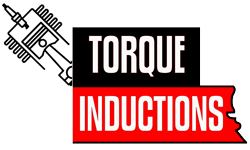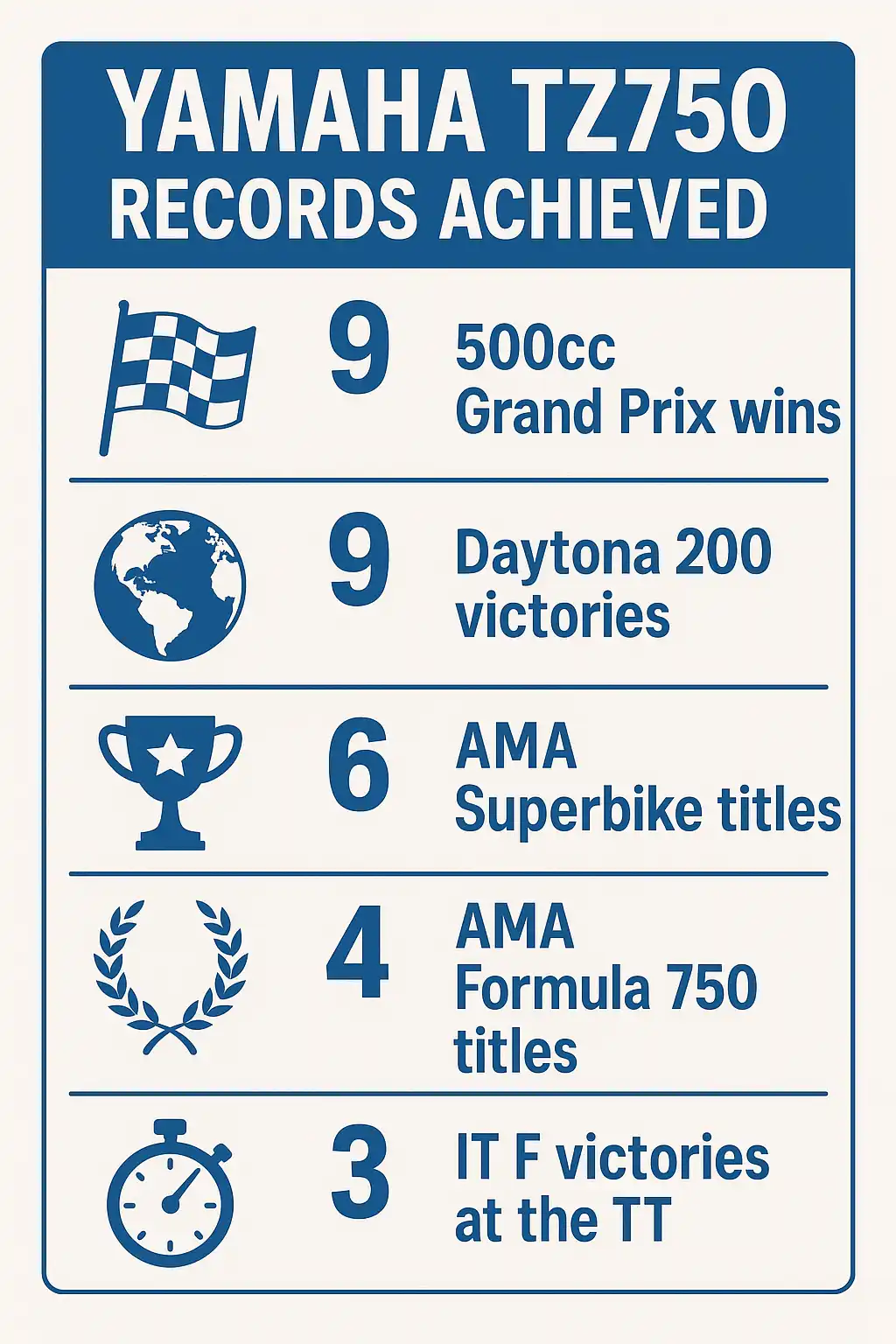- Posted on
- • Classic
Yamaha TZ750: Iconic Two-Stroke Racing Legend Unveiled
- Author
-
-

- User
- Torque
- Posts by this author
- Posts by this author
-

Yamaha TZ750 – the untamed two‑stroke legend
Picture yourself in the ’70s, trackside, lungs full of two‑stroke smoke, engines wailing like banshees. Then here comes the Yamaha TZ750, and trust me, this thing isn’t for the faint‑hearted. It’s not some tame cruiser—it’s a full‑blown monster that makes you wonder if the rider’s fearless or just a little bit crazy. Back in the day it owned every race it entered, and even now its name still gets gearheads like me all jittery. Let’s jump in and see what made the TZ750 such an icon—its wild design, the jaw‑dropping engine, those killer features, and (if you’re lucky) what it might cost you today.
Built to Win, Not to Look Cute
Back in the early ‘70s, Yamaha was itching to take on the big dogs—Honda, Suzuki, Kawasaki—in the 750cc racing scene. Their weapon? The TZ750. This wasn’t a bike you’d take to the grocery store; it was a track-only terror, born to tear up the Formula 750 class. The frame was this rugged steel cradle thing—nothing fancy, just tough as nails to hold that wild engine in check. Early versions had twin shocks, but then Yamaha dropped the monoshock setup around ‘75, and suddenly riders could fling it into corners without kissing the pavement (well, most of the time).
The body? Barely there—just enough to keep the wind off and let you know it’s a bike. Wide tires and a low stance made it stick to the track, but you had to fight it to keep it from bucking you off. I’ve seen old pics of guys like Kenny Roberts leaning into turns on this thing, and it’s like they’re dancing with a tiger. No electronics, no safety nets—just raw power and a prayer.
Features That Made It a Champ
Don’t expect heated grips or a cupholder—the TZ750 was all about winning, not comfort. That monoshock I mentioned? Total game-changer. It smoothed out bumpy tracks way better than the old twin-shock deal. The brakes were beefy too—big twin front discs that could stop this 340-pound rocket on a dime. And the six-speed gearbox? Perfect for keeping that engine revving right where it needed to be.
The carbs—four Mikuni 34mm jobs—fed that two-stroke monster, and the exhaust pipes? Four of ‘em, snaking around like some mad plumber’s nightmare. Early ones cracked like crazy under the vibes, but Yamaha sorted it out quick. Oh, and get this: the crankshaft spun backward. Weird, right? But it worked, giving the power this funky kick that riders had to master.
The Engine: Four Cylinders of Fury
Here’s where it gets nuts. The TZ750’s heart was a liquid-cooled, two-stroke four-cylinder engine. When it rolled out in ‘74, it was 694cc, spitting out about 90 horsepower at 10,500 rpm. Doesn’t sound huge now, but on a bike this light? Insane. By ‘75, they punched it up to 747cc, and stock power hit 120 horses. Tuned factory versions—like the OW31 Kenny Roberts rode—could push 140 or more. It was basically two TZ350 engines mashed together, and it hit like a freight train once you got past 7,000 rpm.
No smooth cruiser vibes here—it was all or nothing. You either kept it singing in the powerband, or you were eating dust. Every tweak from the A to F models made it sharper, faster, meaner.
Mileage? What Mileage?
Look, if you’re asking about gas mileage, you’re missing the point. The TZ750 wasn’t built for sipping fuel—it guzzled it like a frat boy at a keg party. In a race, you’d burn through the tank in no time, screaming at 10,000 rpm. Some lunatics made street-legal versions, but good luck finding a gas station every five minutes. It’s the price of glory—fuel efficiency be damned.
How Much to Own a Legend?
Back in ‘74, you could grab a TZ750 for about $3,500—crazy cheap for a race-winner. In the UK, the ‘77 D model went for £6,500, but they barely shipped any over. Nowadays? Good luck. A beat-up ‘74 might run you $50,000, while a mint one—or one with a Daytona win under its belt—could hit $75,000 easy. The factory OW31? Think six figures, if you can even find one. They only made a few hundred total, so they’re like unicorn tears.
Why It’s Still the One to Beat
This bike didn’t just race—it dominated. Nine Daytona 200 wins in a row, lap records at the Isle of Man, even a flat-track stint so fast the AMA banned it after one go. Roberts called it a handful, and he wasn’t kidding—it was terrifyingly awesome. That monoshock and wide tires? They changed racing forever.
For me, the TZ750’s a time machine—a loud, smoky blast to when racing was gritty and real. If you ever hear one fire up, that two-stroke howl’ll give you chills. Owning one’s a pipe dream now, but man, what a ride it’d be.
🏁 Yamaha TZ750 Series - Full Specification Table
| Specification | TZ750A (1974) | TZ750B (1975) | TZ750C (1976) | TZ750D (1977) | TZ750F (1979) |
|---|---|---|---|---|---|
| Engine Type | 2-stroke, inline-4 | 2-stroke, inline-4 | 2-stroke, inline-4 | 2-stroke, inline-4 | 2-stroke, inline-4 |
| Displacement | 747cc | 747cc | 747cc | 747cc | 748cc (revised cases) |
| Cooling | Liquid-cooled | Liquid-cooled | Liquid-cooled | Liquid-cooled | Liquid-cooled |
| Bore x Stroke | 66.4 x 54 mm | 66.4 x 54 mm | 66.4 x 54 mm | 66.4 x 54 mm | 66.4 x 54 mm |
| Compression Ratio | 7.2:1 | 7.2:1 | 7.2:1 | 7.0:1 | 7.0:1 |
| Max Power | ~120 hp @ 10,500 rpm | ~125 hp @ 10,500 rpm | ~135 hp @ 10,500 rpm | ~140 hp @ 10,500 rpm | ~140+ hp @ 10,500 rpm |
| Torque | ~105 Nm @ 9,000 rpm | ~110 Nm @ 9,000 rpm | ~115 Nm @ 9,500 rpm | ~120 Nm @ 9,500 rpm | ~120+ Nm @ 9,500 rpm |
| Induction | 4 x Mikuni VM34SC carbs | 4 x Mikuni VM34SC | 4 x Mikuni VM38SC | 4 x Mikuni VM38SC | 4 x Mikuni VM38SS |
| Ignition | CDI (Magneto) | CDI (Magneto) | CDI | CDI | CDI |
| Gearbox | 5-speed, cassette type | 5-speed, close ratio | 5-speed, close ratio | 5-speed, close ratio | 6-speed, close ratio |
| Final Drive | Chain | Chain | Chain | Chain | Chain |
| Clutch | Dry, multiplate | Dry, multiplate | Dry, multiplate | Dry, multiplate | Dry, multiplate |
| Frame Type | Double cradle steel | Double cradle steel | Twin loop steel | Monoshock (YZR-style) | Reinforced aluminum |
| Front Suspension | Telescopic forks | Telescopic forks | Kayaba 36mm forks | Kayaba 38mm forks | 38mm leading-axle forks |
| Rear Suspension | Twin shocks | Twin shocks | Twin shocks | Monoshock (YZR-style) | Monoshock (YZR-style) |
| Brakes (F/R) | Twin 280mm disc / drum | Twin 280mm / drum | Twin 295mm / disc | Dual discs front & rear | Triple 296mm / dual disc |
| Wheels | Spoke wheels | Spoke wheels | Cast magnesium | Cast magnesium | Cast magnesium |
| Tyres (F/R) | 3.25-18 / 3.50-18 | 3.25-18 / 3.50-18 | 3.50-18 / 4.25-18 | 3.75-18 / 4.25-18 | 3.75-18 / 4.50-18 |
| Wheelbase | 1,450 mm | 1,470 mm | 1,480 mm | 1,490 mm | 1,495 mm |
| Dry Weight | ~152 kg | ~148 kg | ~145 kg | ~140 kg | ~138 kg |
| Fuel Capacity | 24 litres | 24 litres | 23 litres | 22 litres | 21 litres |
| Top Speed | ~290 km/h (180 mph) | ~295 km/h | ~300 km/h | ~305 km/h | 310+ km/h |
| Notable Upgrades | First production model | Lighter weight | Better brakes, forks | Monoshock intro | Most powerful TZ750 |
| Racing Use | Daytona 200 debut | AMA, GP use | GP & F750 dominance | Isle of Man TT + AMA | Rare factory race bike |

🔧 Additional Noteworthy Details of Yamaha TZ750
- Exhaust Configuration: 4 separate expansion chambers, often modified for racing depending on the circuit.
- Notable Racers: Kenny Roberts, Steve Baker, Giacomo Agostini, Gene Romero, and others dominated on the TZ750.
- Legacy Quote: Kenny Roberts famously said, “They don't pay me enough to ride that thing!” after his Daytona 200 victory.
- Racing Ban: The TZ750 was so dominant and dangerous that Formula 750 was eventually phased out due to escalating speeds and safety concerns.
- Handling Quirk: The bike was extremely fast but known for high-speed instability and brutal acceleration, often lifting the front even in top gears.
- Availability: The TZ750 was sold only to licensed racers, not the general public. Many were customized privately for racing teams.
- Collectibility: Now a highly prized collector’s item. Only ~600 units were produced across all variants from 1974 to 1979.
Pros and Cons
| Pros | Cons |
|---|---|
| Incredible Power Its 747 cc two‑stroke inline‑4 engine delivered “seat‑of‑your‑pants” acceleration and a top speed north of 300 km/h. |
Brutal Power Delivery The surge of torque was so fierce it could unsettle the chassis and lift the front wheel even in top gear. |
| Racing Pedigree Dominated 500 cc Grand Prix, Daytona 200, and AMA events—many legends won on this bike. |
High Maintenance The race‑tuned two‑stroke needed frequent rebuilds, careful setup, and constant attention. |
| Lightweight Chassis At around 140–150 kg dry, it was razor‑sharp through corners (when the suspension was dialed in). |
Nerve‑Wracking Handling Early forks and chassis lacked damping, making high‑speed stability a challenge. |
| Iconic Status A poster‑bike for the era—its unique exhaust pipes and livery still turn heads at vintage events. |
Rider Skill Required This was not a beginner’s machine: only experienced racers could tame its power and quirks. |
| Exclusivity Factory‑built race bike sold only to professional teams—today it’s a rare collectors’ item. |
Scarcity & Cost Very few survive in original condition, and prices (if you find one) easily climb into six figures. |
| Customizable Setup Teams could tweak port timing, pipe lengths, and suspension to suit each track. |
Heat & Noise The bike ran hot and loud—two‑stroke exhaust and minimal fairing meant flaming hot pipes and ear‑splitting decibels. |
